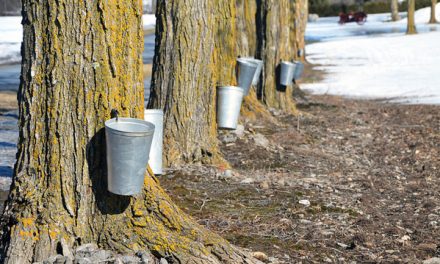Aquafaba is usually discarded from canned chickpeas, but it is recognized as an egg substitute for vegans and those with food allergies. Al-Rajab Photo
Aquafaba is a thick liquid resulting from cooking chickpeas in water. The liquid is usually discarded, but now it is widely used in vegan and vegetarian recipes as an egg replacement (three tablespoons of aquafaba is the equivalent of one whole egg) that adds texture to food products.
It is used in the production of chocolate mousse, mayonnaise, ice cream, pudding, and baked goods without remarkable change to their taste or texture. Aquafaba consists of about 95 per cent water and 5 per cent dry matter which includes carbohydrates (i.e., sugars, soluble and insoluble fibre). Recent research unveiled positive effects of aquafaba on the physiochemical properties of foods including confections, egg/gluten-free bakery products and mayonnaise.
This novelty was discussed in detail in a review article entitled “Aquafaba, a new plant-based rheological additive for food applications” published recently in the peer reviewed journal “Trends in Food Science & Technology”.
The research team consisted of Canadian researchers from the University of Saskatchewan; they presented an overview of aquafaba composition, functional properties, opportunities, and challenges associated with using aquafaba in food formulations.
Despite the growing interest in commercial production of aquafaba, more effort is needed to understand conditions that affect aquafaba functionality, and to develop approaches to standardize commercial aquafaba production.
Global production and consumption
The name chickpea comes from the Latin word cicer, referring to the plant family of legumes, Fabaceae. In 2019, the world produced a total of 14 million tons of chickpea. India has been the top producer of chickpeas over the last several years with nearly 10 million tons produced annually. Turkey came in second at an estimated 630,000 tons. Canada was ranked nineth with a production of about 251,500 tons, just after USA and Australia, as reported by (Statista.com).
Back in 2017, some 55 million tons of pulses (edible seed which include beans, lentils, peas, and chickpeas) were produced worldwide, up from 50 million tons in 2015. Beans are the most grown type of pulse, at 22.6 million tons as of 2017, followed by lentils at 13.3 million tons in that same year.
In Canada, most of the pulse is grown in the prairie provinces of Alberta, Saskatchewan, and Manitoba, with bean production concentrated in southern Ontario and Quebec.
Pulse production in Canada has grown rapidly in the past decade. Canadian pulse farmers seed an average of 3.5 million hectares of pulse per year. In the United States, chickpeas were among the five leading pulse based on sales value. Chickpeas, like all legumes, are a good source of protein and fibre, making them a popular source of protein for vegans and vegetarians. Worldwide, chickpeas are very popular in over 50 countries, especially in Asia and Middle East, where the famous “hummus” became essential in traditional foods. Also, roasted and ground chickpeas have been used as a caffeine-free alternative to coffee for centuries.
Health benefits of chickpeas
Chickpeas have potential health benefits such as the prevention of cardiovascular disease, hypo-cholesterolemic, anti-diabetic, anti-cancerous, and anti-inflammatory activity.
Moreover, chickpeas are a rich source of carbohydrates, protein, and dietary fibre along with micronutrients. Its importance and utilization for several health ailments have been mentioned in ancient manuscripts.
Chickpeas appear in early recordings in Turkey about 3,500 BCE and in France 6,790 BCE. Bioavailability of chickpea protein in the human body is higher compared to other pulses.
Chickpea protein hydrolysates have antioxidant properties. Also, chickpeas contain a soluble fibre called raffinose, a type of oligosaccharide that is fermented in the colon by beneficial bacteria called Bifidobacterium.
As bacteria break down this fibre, a short chain fatty acid called butyrate is produced. Butyrate plays a role in reducing inflammation in the cell wall of the colon, promoting regularity in the intestines, and possibly preventing colorectal cancer.
Although chickpeas contain less than 7 per cent fat, it is an important source of unsaturated fatty acids, mainly linoleic and oleic acid. Isoflavones and carotenoids are the major bioactive compounds present in chickpeas.
Finally, the processing of chickpeas before consumption, result in the elimination of anti-nutritional factors.













